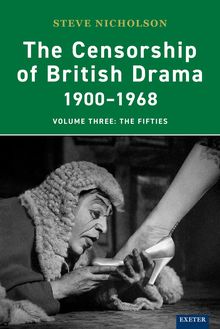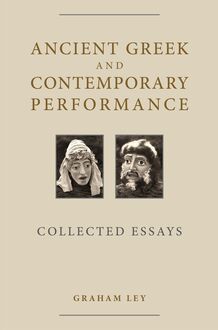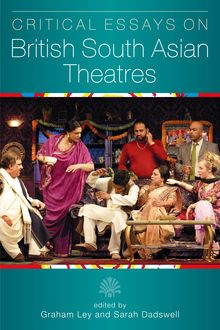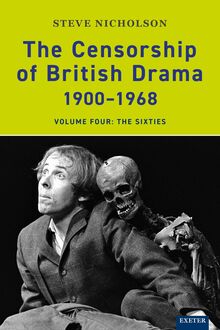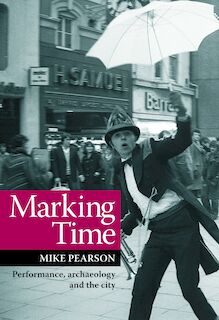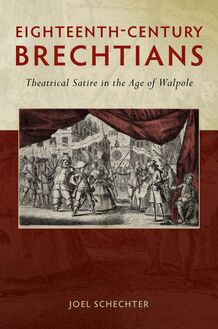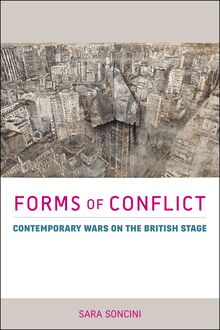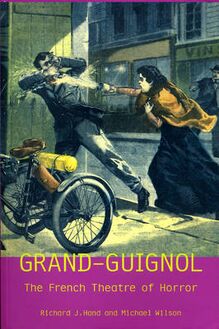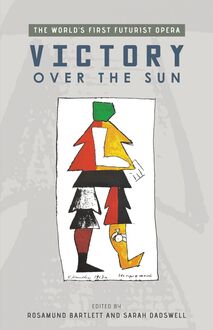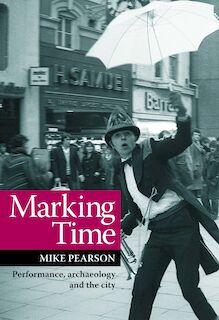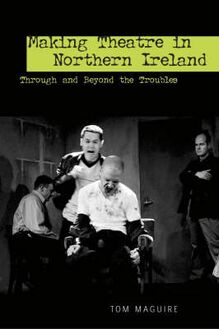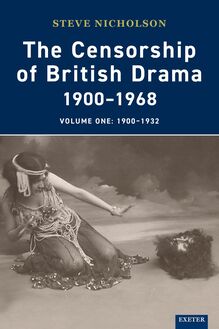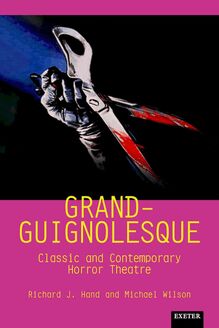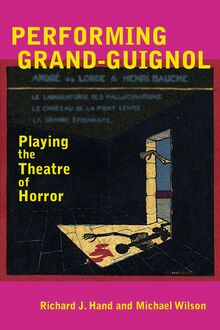-
 Univers
Univers
-
 Ebooks
Ebooks
-
 Livres audio
Livres audio
-
 Presse
Presse
-
 Podcasts
Podcasts
-
 BD
BD
-
 Documents
Documents
-
- Cours
- Révisions
- Ressources pédagogiques
- Sciences de l’éducation
- Manuels scolaires
- Langues
- Travaux de classe
- Annales de BEP
- Etudes supérieures
- Maternelle et primaire
- Fiches de lecture
- Orientation scolaire
- Méthodologie
- Corrigés de devoir
- Annales d’examens et concours
- Annales du bac
- Annales du brevet
- Rapports de stage
La lecture à portée de main
Vous pourrez modifier la taille du texte de cet ouvrage
Découvre YouScribe en t'inscrivant gratuitement
Je m'inscrisDécouvre YouScribe en t'inscrivant gratuitement
Je m'inscrisEn savoir plus
Vous pourrez modifier la taille du texte de cet ouvrage
En savoir plus

Description
From the authors of the successful Grand-Guignol and London’s Grand Guignol - also published by UEP – this book includes translations of a further eleven plays, adding significantly to the repertoire of Grand-Guignol plays available in the English language. The emphasis in the translation and adaptation of these plays is once again to foreground the performability of the scripts within a modern context – making Performing Grand-Guignol an ideal acting guide.
Hand and Wilson have acquired extremely rare acting copies of plays which have never been published and scripts that were published in the early years of the twentieth century but have not been published since – even in French. Includes plays written by, or adapted from, such notable writers as Octave Mirbeau, Gaston Leroux and St John Ervine as well as examples by Grand-Guignol stalwarts René Berton and André de Lorde. Also included is the 1920s London translation of Blind Man’s Buff written by Charles Hellem and Pol d’Estoc and banned by the Lord Chamberlain.
A brief history of the Parisian theatre is also included, for the benefit of readers who have not read the previous books.
Preface
A note on the scripts
Section I: A Brief History of the Théâtre du Grand-Guignol
Section II: The Grand-Guignol Laboratory
Section III: Prefaces and Plays
First Programme
The Haunted House (La Maison hantée) by Marc Bonis-Charancle
The Kama Sutra or Never Play with Fire… (Kama Soutra, ou Il ne faut pas joer avec le feu) by Régis Gignoux
Blind Man’s Buff by Charles Hellem and Pol d’Estoc
The Light in the Tomb (Gott mit uns! (La Lumière dans la tombeau))by René Berton
Second Programme
Progress by St. John Ervine
A Silk Dress (Une Robe de Soie) by Henriette Charasson
The Great Terror (La Grande épouvante) by André de Lorde and Henri Bauche
Third Programme
The Wax Museum (Figures de Cire) by André de Lorde and Georges Montignac
The Lovers (Les Amants) by Octave Mirbeau
The Man Who Met the Devil (L’homme qui a vu le diable) by Gaston Leroux
The Man Who Killed Death (L’homme qui a tué la mort) by René Berton
Sujets
Informations
| Publié par | University of Exeter Press |
| Date de parution | 31 juillet 2019 |
| Nombre de lectures | 0 |
| EAN13 | 9780859891141 |
| Langue | English |
Informations légales : prix de location à la page 0,1650€. Cette information est donnée uniquement à titre indicatif conformément à la législation en vigueur.
Extrait
Performing Grand-Guignol: Playing the Theatre of Horror
The third volume in this ground-breaking series on Grand-Guignol and the ‘theatre of horror’, Performing Grand-Guignol provides unprecedented practical grounding for any theatre ensemble wishing to perform Grand-Guignol. The book provides eleven classic Grand-Guignol plays representing the genre’s classic mixture of horror and comedy. The plays are mainly first translations and adaptations of masterpieces from across all eras of the French repertoire but also included are two from the London experiment in Grand Guignol in the 1920s (one of these being the first publication of a horror play that was banned by the British theatre censor). In addition, the authors provide a detailed description of exercises and rehearsal processes which lead the reader through the Grand-Guignol performance journey in an accessible and encouraging way.
Richard J. Hand is Professor of Theatre and Media Drama at the Faculty of Creative and Cultural Industries, University of South Wales. His interests include adaptation and translation in performance media, particularly in historical forms of popular culture.
Michael Wilson is Professor of Drama at Loughborough University; he was previously Professor of Drama at University College Falmouth. His main areas of research lie within the fields of popular vernacular theatre and storytelling.
Also by Richard J. Hand and Michael Wilson, and published by University of Exeter Press:
Grand-Guignol: The French Theatre of Horror (2002) and London’s Grand Guignol and the Theatre of Horror (2007)
Exeter Performance Studies
Series editors : Peter Thomson, Professor of Drama at the University of Exeter; Graham Ley, Professor of Drama and Theory at the University of Exeter; Steve Nicholson, Professor in Twentieth-Century and Contemporary Theatre at the University of Sheffield.
A complete list of books published in the series is available from the publishers, University of Exeter Press, www.exeterpress.co.uk .
The Censorship of British Drama 1900–1968: Volume One 1900–1932
Steve Nicholson (2003)
The Censorship of British Drama 1900–1968: Volume Two 1933–1952
Steve Nicholson (2005)
Freedom’s Pioneer: John McGrath’s Work in Theatre, Film and Television
edited by David Bradby and Susanna Capon (2005)
John McGrath: Plays for England
selected and introduced by Nadine Holdsworth (2005)
Theatre Workshop: Joan Littlewood and the Making of Modern British Theatre
Robert Leach (2006)
Making Theatre in Northern Ireland: Through and Beyond the Troubles
Tom Maguire (2006)
“In Comes I”: Performance, Memory and Landscape
Mike Pearson (2006)
Theatres of the Troubles: Theatre, Resistance and Liberation in Ireland
Bill McDonnell (2008)
The Censorship of British Drama 1900–1968: Volume Three, The Fifties
Steve Nicholson (2011)
British South Asian Theatres: A Documented History
edited by Graham Ley and Sara Dadswell (2011)
Critical Essays on British South Asian Theatre
edited by Graham Ley and Sara Dadswell (2012)
Victory Over the Sun: The World’s First Futurist Opera
edited by Sara Dadswell and Rosamund Bartlett (2012)
Marking Time: Performance, Archaeology and the City
Mike Pearson (2013)
Singing Simpkin and Other Bawdy Jigs: Musical Comedy on the Shakespearean Stage
Roger Clegg and Lucie Skeaping (2014)
Ancient Greek and Contemporary Performance: Collected Essays
Graham Ley (2014)
The Censorship of British Drama 1900–1968: Volume Four, The Sixties
Steve Nicholson (2015)
Eighteenth-Century Brechtians: Theatrical Satire in the Age of Walpole
Joel Schechter (2016)
Forms of Conflict: Contemporary Wars on the British Stage
Sara Soncini (2016)
First published in 2016 University of Exeter Press Reed Hall, Streatham Drive Exeter EX4 4QR UK www.exeterpress.co.uk
© 2016 Sections I, II and all editorial material, Richard J. Hand and Michael Wilson; the plays, as indicated at the beginning of Section III
The right of Richard J. Hand and Michael Wilson to be identified as authors of this work has been asserted by them in accordance with the Copyright, Designs and Patents Act 1988.
British Library Cataloguing in Publication Data A catalogue record for this book is available from the British Library.
Hardback ISBN 978 0 85989 995 6 Paperback ISBN 978 0 85989 996 3 ePub ISBN 978 0 85989 114 1 PDFISBN 978 0 85989 113 4
Typeset in Sabon, 10 on 12 by Carnegie Book Production
To Sadiyah, Shara, Danya and Jim (RJH)
To Matthew, Rosie, Jake and Sophie – the Next Generation (MW)
Contents
List of Illustrations
Preface
SECTION I: A Brief History of the Théâtre du Grand-Guignol
SECTION II: The Grand-Guignol Laboratory
A Gallery of Production Photographs from the Grand-Guignol Laboratory
SECTION III: Prefaces and Plays
First Programme
The Haunted House ( La Maison hantée ) by Marc Bonis-Charancle
The Kama Sutra or Never Play with Fire … ( Kama Soutra, ou Il ne faut pas jouer avec le feu ) by Régis Gignoux
Blind Man’s Buff by Charles Hellem and Pol d’Estoc
The Light in the Tomb / Gott mit uns! ( La Lumière dans le tombeau / Gott mit uns! ) by René Berton
Second Programme
Progress by St. John Ervine
A Silk Dress ( Une Robe de Soie ) by Henriette Charasson
The Great Terror ( La Grande épouvante ) by André de Lorde and Henri Bauche
Third Programme
The Wax Museum ( Figures de Cire ) by André de Lorde and Georges Montignac
The Lovers ( Les Amants ) by Octave Mirbeau
The Man Who Met the Devil ( L’Homme qui a vu le diable ) by Gaston Leroux
The Man Who Killed Death (L’Homme qui a tué la mort) by René Berton
Bibliography
Index
Illustrations
A Gallery of Production Photographs from the Grand-Guignol Laboratory between pages 48 and 49
1 Suspense
2 Despair
3 Ecstasy
4 The Two Masks of the Grand-Guignol
5 Dark Laughter
6 Fury
7 Madness
8 Eye-Catching Publicity
9 Poster for the premiere of René Berton’s Gott mit uns! ( The Light in the Tomb ) at the Théâtre du Grand Guignol in 1928
10 Film poster for The Brain That Wouldn’t Die (Joseph Green, 1962)
11 Poster for the premiere of René Berton’s L’Homme qui a tué la mort at the Théâtre du Grand Guignol in 1928
Preface
It is now more than fifteen years since we first began this project to explore the extraordinary, but largely forgotten, theatre in Montmartre that was the Théâtre du Grand-Guignol. In that time we have run numerous exploratory workshops with students, some of whom are now older than we were when we started all of this. Some of those workshops led to productions; some didn’t. But all the work we have done with our student collaborators over the years has led to more knowledge and fresh insights into the Grand-Guignol.
We have also, over the years, witnessed something of a revival of interest in horror theatre more generally and Grand-Guignol specifically amongst amateur enthusiasts and passionate professionals alike. We have been fortunate enough to meet with, discuss with and watch the productions of many of these individuals and companies. We have also published two previous books on the Grand-Guignol. The first of those, Grand-Guignol: French Theatre of Horror (2002), dealt exclusively with the history and practice of the Théâtre du Grand-Guignol in the Pigalle district of Paris from 1897 until 1962. The second volume, London’s Grand Guignol and the Theatre of Horror (2007), concerned itself with the attempt by José Levy to establish a British version of the form at the Little Theatre in John Adam Street from 1920 to 1922, in which the Thorndike-Cassons and a young Noël Coward were amongst the collaborators. Both of these volumes were primarily histories and, although this volume also starts with a brief history of the Parisian theatre (for the benefit of those readers who have not read, or do not wish to read, the earlier volumes), this latest volume has a different focus.
In all our work on the Grand-Guignol we have always tried to be responsive to those who have read the books and corresponded or worked with us, and we have been consistently asked to address two issues.
Firstly, we have been asked to provide some insights into the way that we ourselves have worked with students within the context of the Grand-Guignol Laboratory, which we set up at the University of Glamorgan (now the University of South Wales) when we started this project. The Lab has always been an ad hoc entity that has allowed us to contextualize our explorations of the Grand-Guignol within a research and teaching framework. The introductory section to this book describes some of the ways we have worked with students over the years. This practice can be broken down into three main elements: the repurposing of standard drama and actor training exercises with a particular focus on horror performance; an engagement with other forms of horror performance (especially film) as a point of reference; and close textual work (including in the areas of translation and adaptation) in recognition of the Grand-Guignol as writers’ theatre.
The second request we have had is for more (and more) plays. This delighted us, as it gave us the perfect excuse to hunt down more obscure and out-of-print texts and translate them, and we are pleased to include a further eleven plays, significantly adding to the repertoire of Grand-Guignol plays available in the English language. We very much look forward to hearing about the performance of these newly available scripts in professional, amateur or pedagogical production contexts and may even get to one or two productions ourselves. We would merely repeat the request we have made before: we would be glad to hear from any companies working with the Grand-Guignol and would happily receive copies of production materials for our own (ever-growing) archives.
The selection here is a deliberately eclectic mix. It includes some pieces that we wanted to tackle in Grand-Guignol: French Theatre of Horror and London’s Grand Guignol an
-
 Univers
Univers
-
 Ebooks
Ebooks
-
 Livres audio
Livres audio
-
 Presse
Presse
-
 Podcasts
Podcasts
-
 BD
BD
-
 Documents
Documents
-
Jeunesse
-
Littérature
-
Ressources professionnelles
-
Santé et bien-être
-
Savoirs
-
Education
-
Loisirs et hobbies
-
Art, musique et cinéma
-
Actualité et débat de société
-
Jeunesse
-
Littérature
-
Ressources professionnelles
-
Santé et bien-être
-
Savoirs
-
Education
-
Loisirs et hobbies
-
Art, musique et cinéma
-
Actualité et débat de société
-
Actualités
-
Lifestyle
-
Presse jeunesse
-
Presse professionnelle
-
Pratique
-
Presse sportive
-
Presse internationale
-
Culture & Médias
-
Action et Aventures
-
Science-fiction et Fantasy
-
Société
-
Jeunesse
-
Littérature
-
Ressources professionnelles
-
Santé et bien-être
-
Savoirs
-
Education
-
Loisirs et hobbies
-
Art, musique et cinéma
-
Actualité et débat de société
- Cours
- Révisions
- Ressources pédagogiques
- Sciences de l’éducation
- Manuels scolaires
- Langues
- Travaux de classe
- Annales de BEP
- Etudes supérieures
- Maternelle et primaire
- Fiches de lecture
- Orientation scolaire
- Méthodologie
- Corrigés de devoir
- Annales d’examens et concours
- Annales du bac
- Annales du brevet
- Rapports de stage
